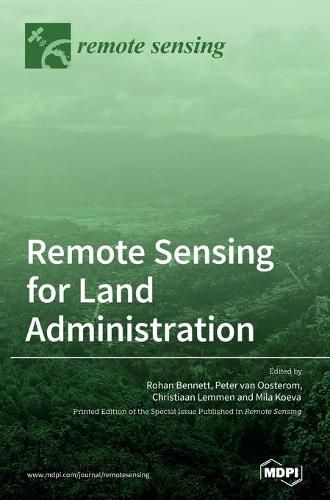Readings Newsletter
Become a Readings Member to make your shopping experience even easier.
Sign in or sign up for free!
You’re not far away from qualifying for FREE standard shipping within Australia
You’ve qualified for FREE standard shipping within Australia
The cart is loading…






This title is printed to order. This book may have been self-published. If so, we cannot guarantee the quality of the content. In the main most books will have gone through the editing process however some may not. We therefore suggest that you be aware of this before ordering this book. If in doubt check either the author or publisher’s details as we are unable to accept any returns unless they are faulty. Please contact us if you have any questions.
What is land? Who owns it? Who can use it? How much is it worth? What can it be used for? These are the questions land administration seeks to answer responsibly, which requires trustworthy people, transparent processes, and reliable information systems. Spatial information is an essential ingredient, and is embedded in the cadastral plans, maps, and land registry records that are used to prove ownership, trade land, access credit, resolve land disputes, enable fair taxation, and support land use planning and development. In the past, ground-based surveying techniques were used to capture the information, however, advances in remote sensing are driving the development of approaches that are faster, lower in cost, more accurate, or more participatory. These can be used to build land administration systems that better support poverty reduction, rapid urbanization, vertical development, and complex infrastructure management. The contributions contained in this book unpack these developments and the potential impacts and explore applications of high-resolution satellite imagery, unmanned aerial vehicle imagery, laser scanning, airborne and terrestrial (LiDAR), machine learning, and artificial intelligence methods, as applied to land administration in parts of Europe, Asia, and Africa.
$9.00 standard shipping within Australia
FREE standard shipping within Australia for orders over $100.00
Express & International shipping calculated at checkout
This title is printed to order. This book may have been self-published. If so, we cannot guarantee the quality of the content. In the main most books will have gone through the editing process however some may not. We therefore suggest that you be aware of this before ordering this book. If in doubt check either the author or publisher’s details as we are unable to accept any returns unless they are faulty. Please contact us if you have any questions.
What is land? Who owns it? Who can use it? How much is it worth? What can it be used for? These are the questions land administration seeks to answer responsibly, which requires trustworthy people, transparent processes, and reliable information systems. Spatial information is an essential ingredient, and is embedded in the cadastral plans, maps, and land registry records that are used to prove ownership, trade land, access credit, resolve land disputes, enable fair taxation, and support land use planning and development. In the past, ground-based surveying techniques were used to capture the information, however, advances in remote sensing are driving the development of approaches that are faster, lower in cost, more accurate, or more participatory. These can be used to build land administration systems that better support poverty reduction, rapid urbanization, vertical development, and complex infrastructure management. The contributions contained in this book unpack these developments and the potential impacts and explore applications of high-resolution satellite imagery, unmanned aerial vehicle imagery, laser scanning, airborne and terrestrial (LiDAR), machine learning, and artificial intelligence methods, as applied to land administration in parts of Europe, Asia, and Africa.